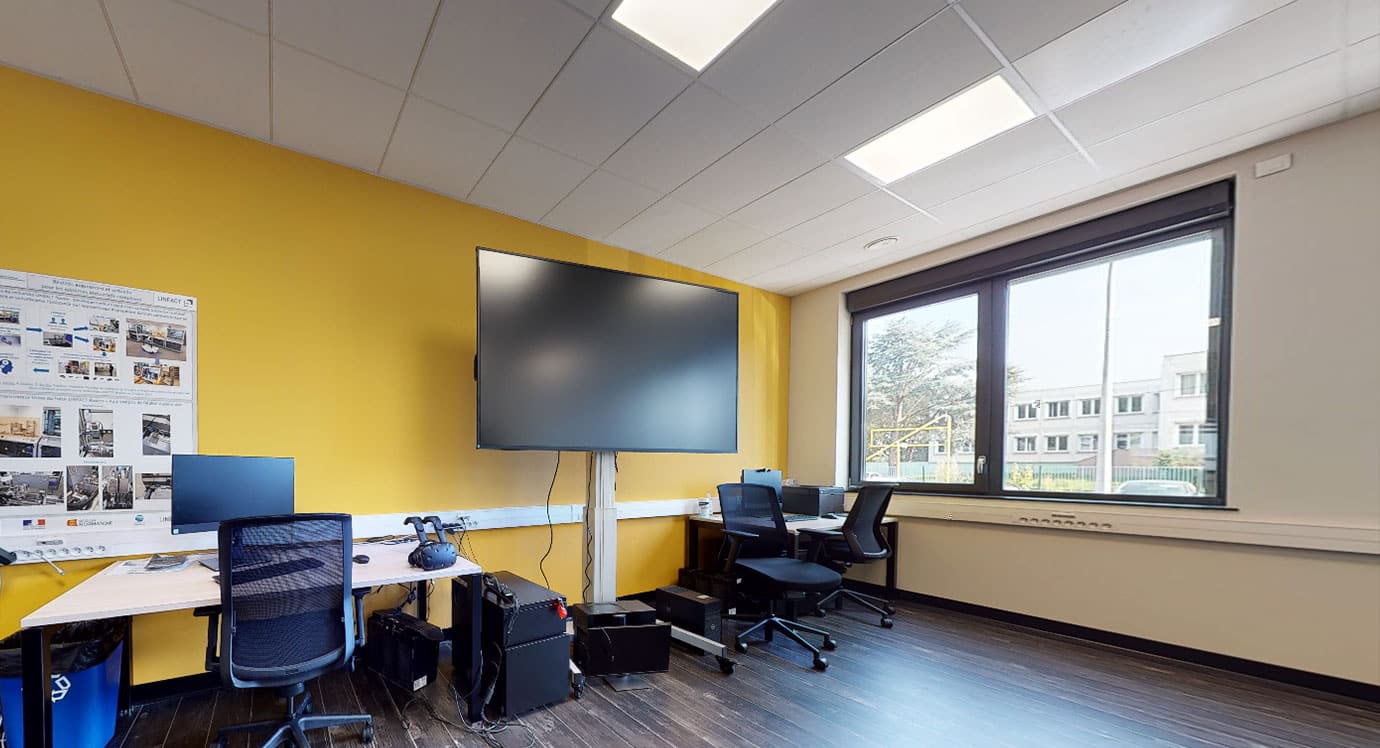VR’LAB
Boosted by the boom in 3D modelling, virtual and augmented reality are finding new uses in the industrial and construction sectors. The CESI laboratories on the Nanterre, Rouen, Lyon and Arras campuses provide training in these immersive technologies, now essential to the Industry of the Future.
Advantages of virtual and augmented reality

Initially originating from the entertainment industry, virtual reality (VR) and augmented reality (AR) have largely made their way into the construction and industrial sectors. Today, these two technologies are linked, for example, to BIM (building information modeling) and the digital model on which it is based. By simplifying exchanges between the building trades, they offer strong added value to any construction project. Furthermore, they simplify reading of the digital modeland significantly increase the customer experience. Virtual reality and augmented reality also represent a real asset for the industry sector as these technologies help to speed up design, training and maintenance.
CESI has set up virtual laboratories dedicated to modelling and digital simulation to meet these challenges and to train students in the use of new tools. In Nanterre, for example, the campus has a VR’Lab space of nearly 100m², which houses state- of-the-art equipment: around forty virtual reality helmets for smartphones, mixed reality helmets, a compact immersive system such as Valy, as well as computer workstations used for scientific calculation simulations and BIM modelling.
Virtual reality labs: a great training tool
Having already successfully won over the construction sector, virtual reality and augmented reality are also becoming essential in the field of industry. Perfectly suited to simulation, their capacity for full immersion makes them particularly interesting training tools for high-risk industrial jobs. In these VR’Labs, virtual reality allows the user to train in a hyper-realistic environment, while neutralising potential risks, as for example in the pharmaceutical industry, the nuclear industry or industrial technologies with a risk of contamination, such as metal additive manufacturing.
These virtual and augmented reality technologies can be used in many other areas: virtual visits to buildings, on-site inspections, serious games, etc. The fields of application are infinite, and this is just the beginning !